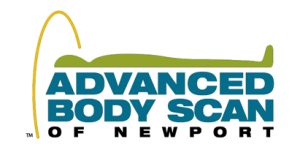Most MDCT Scanners fall short in Cardiac Imaging
This editorial by two heart imaging experts, Dr. John Rumberger and Dr. James Ehrlich, on the use of MDCT versus EBT in coronary CT imaging was originally published on www.AuntMinnie.com on 9/3/2004
Radiology’s enthusiasm for the vast capabilities of multidetector CT technology has grown exponentially with the increase in detector arrays. In many cases the excitement is completely justified: The spatial resolution of new spiral scanners is truly extraordinary, producing strikingly clear images of stationary organs in the body.
At the same time, the search for new radiologic applications for these high-throughput scanners has produced a flourishing cottage industry that was previously the sole domain of cardiologists and cardiac radiologists — coronary calcium quantification. Now many general radiology groups, that may or may not have formal training in cardiovascular CT, offer “calcium heart score” exams, while others promote more advanced procedures including CT coronary angiography.
At the risk of throwing cold water on contemporary radiology practice, it appears to be an appropriate time to re-examine the value and limitations of the typical MDCT coronary imaging service, as well as the inherent benefit presumptions and risk that lie too quietly under the surface. Certainly lay publications and some physicians are questioning a procedure they believe (incorrectly) to be associated with numerous false-positives, and that exposes the unwary patient to a radiation dose equivalent to “hundreds of chest x-rays.”
The question that needs to be asked is: Can calcium scoring conducted on a four- to eight-slice spiral CT (the most common scanner in the U.S. installed base) be justified from a risk/benefit ratio, and can it withstand scrutiny from outside entities like OSHA, medical task forces, and consumer groups?
It’s not difficult to question the actual benefit of providing MDCT calcium scoring. One would be hard-pressed to find literature specifically demonstrating that a spiral CT calcium score predicts coronary events, provides value beyond office-based risk assessment, or has histopathologic, nuclear medicine, or angiographic correlations with disease.
On the other hand, there is impressive evidence that electron beam tomography (EBT) imaging provides an index of plaque burden (via the Agatston calcium score) that is a powerful predictor of future hard coronary events, while rampant progression of the calcium volume score on serial examination has independent and worrisome prognostic significance.
Meanwhile, the so-called science behind MDCT calcium scoring is based almost completely on the years of peer-reviewed literature validation from EBT technology, whose superior temporal characteristics are ideally, by design, suited for cardiac imaging applications. It has become commonplace for radiology reports to make clinical recommendations (without appropriate disclosure), borrowing guidelines and patient databases that were published solely for EBT and Agatston calcium-based data.
Acquisition speed is critical for accuracy of coronary imaging, and MDCT spirals are too slow to image the fast-moving coronary arteries without showing motion artifact, especially at heart rates above 70 bpm.
A study by Goldin et al compared 70 asymptomatic patients who were scanned with “sub-16-slice” spirals and EBT, concluding that “spiral CT has not proved to be a feasible alternative to electron-beam CT for coronary artery calcium scoring.” There was also concern about high interscan variability and high interreader variability using MDCT. The mean interreader variability of 4.5% for EBT, compared to 41.5% for spiral CT, prompted the group to suggest double-reading all studies to better assess coronary calcium scores (Radiology, October 2001, Vol. 22:1, pp. 213-221).
Another study demonstrated that four- and eight-slice MDCT scanners frequently mischaracterize true risk, especially when the CAC score is less than 100 (Becker et al, American Journal of Roentgenology, May 2001, Vol. 176:5, pp. 1295-1298).
On a positive note, it appears that the future of cardiac imaging with scanners that have 16 slices and higher may be exceptionally bright compared to those with eight detectors or fewer.

